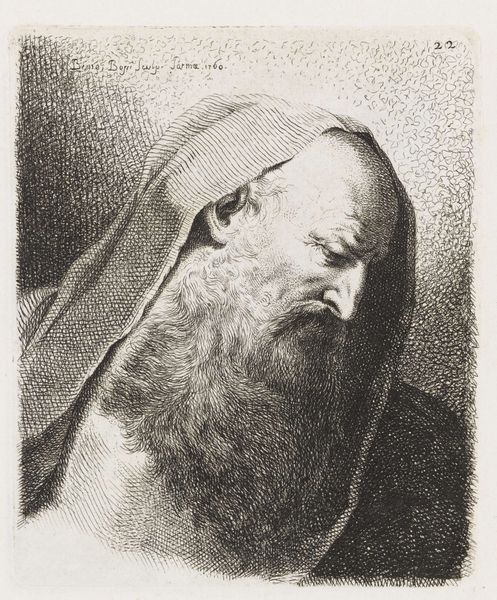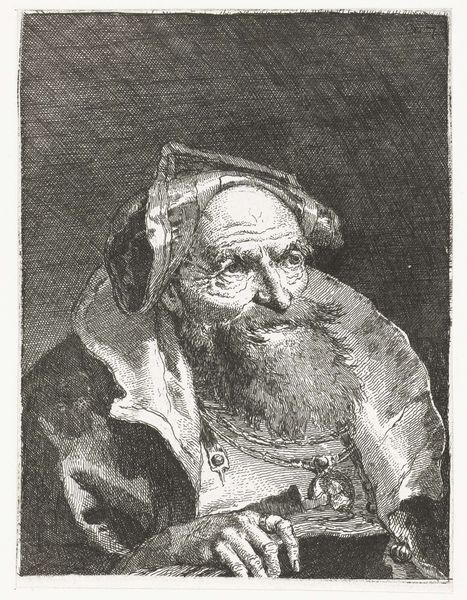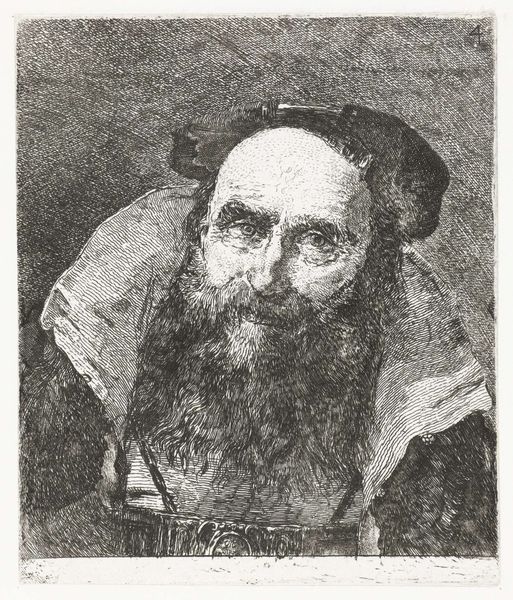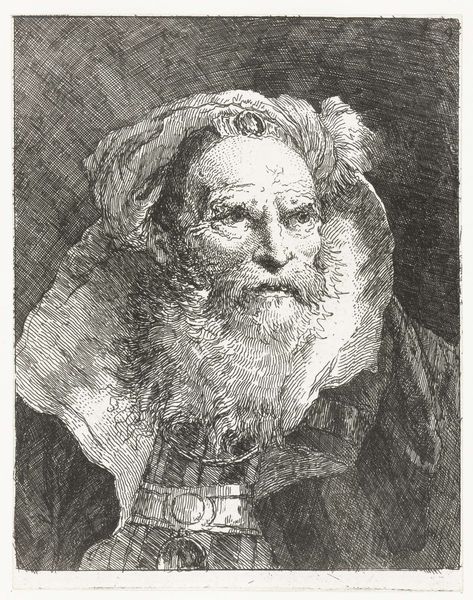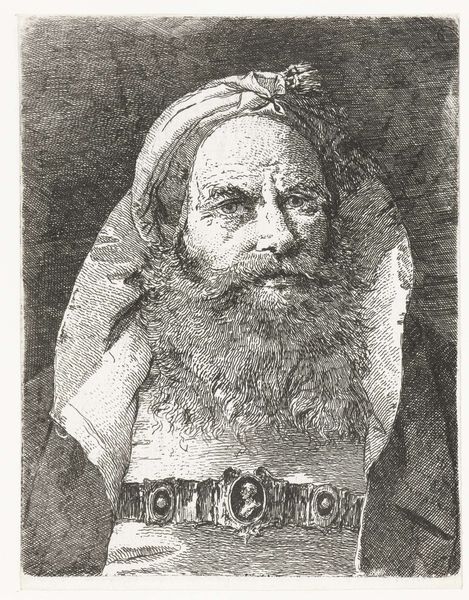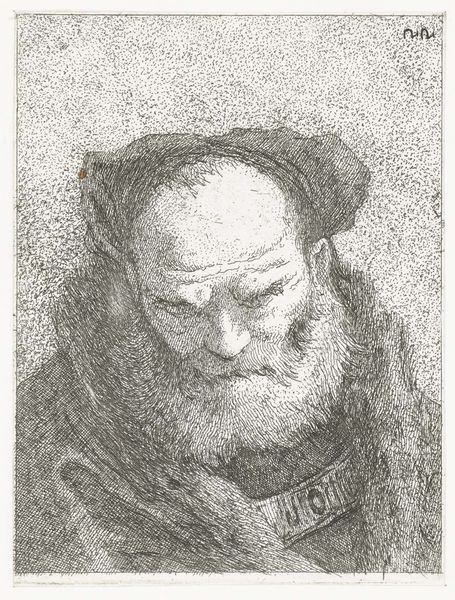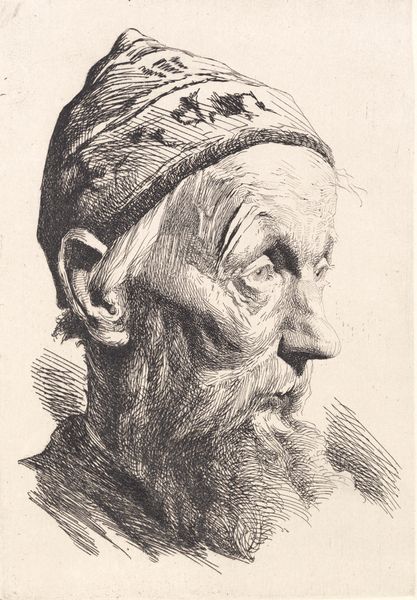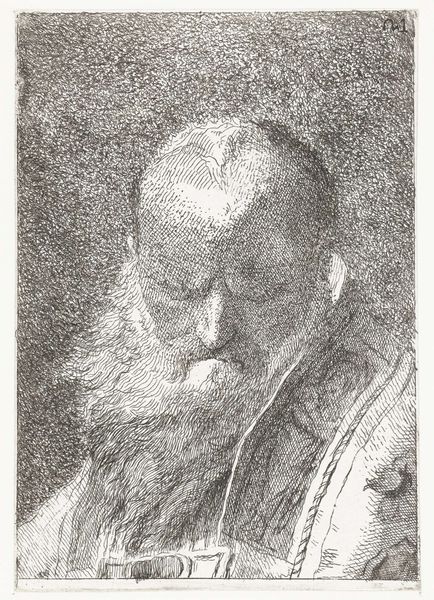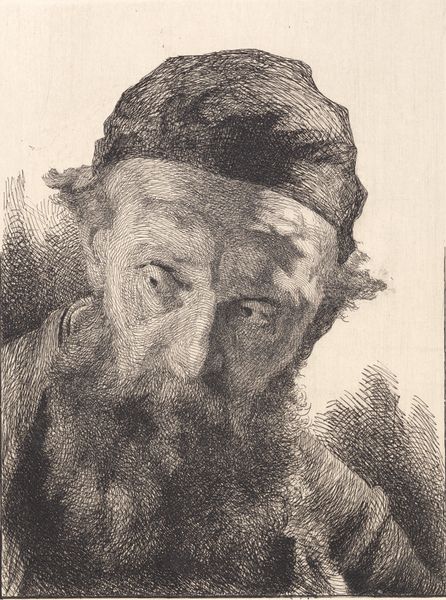
print, engraving
#
portrait
# print
#
figuration
#
line
#
genre-painting
#
engraving
#
realism
Dimensions: height 147 mm, width 108 mm
Copyright: Rijks Museum: Open Domain
Curator: This engraving, "Paus met schenkkan," or "Pope with Ewer," created between 1757 and 1774 by Giovanni Domenico Tiepolo, depicts an elderly man absorbed in the simple act of pouring liquid. The level of detail captured through the engraved lines is extraordinary. Editor: My initial impression is one of profound weariness. The somber tones and the downward gaze of the figure evoke a sense of resignation. The deep lines etched on his face speak volumes about time and hardship. Curator: Absolutely, and it's interesting to consider the implications of depicting a religious figure in such a vulnerable, almost mundane, activity. What social commentaries might Tiepolo be making about power and piety? Or perhaps critiquing the idealized images of religious figures that often gloss over individual, very human, realities. Editor: I am immediately drawn to the pitcher. It feels laden with symbolic weight. It represents both sustenance and ritual, but the fact that it is in his hands points, perhaps, toward ideas about the vessels needed for inner nourishment. Given his bowed head, he might be looking inward rather than toward the world. It could symbolize his capacity for giving. Curator: I appreciate how you frame the image of pouring not as a clerical action but as something universal to all, a form of offering. What do you make of the choice to render him with such exacting detail, yet not quite glorify him? Editor: I believe it echoes a persistent theme: humility as power. Tiepolo seems fascinated by how spiritual authority intertwines with vulnerability. This wasn't necessarily about deconstructing institutions but possibly inviting contemplation on the role of human imperfections in leaders. The contrast between his role, his clothing, and what appears to be a kind of frailty makes him an accessible figure. Curator: He invites us to think about the ways in which leaders of any type carry the burdens of responsibility and their struggles to perform their tasks while still acknowledging life. It’s powerful because its themes are not tethered to any one political agenda. Editor: Precisely, it leaves a potent reminder about empathy within social and religious structures, transcending the work itself. Thank you.
Comments
No comments
Be the first to comment and join the conversation on the ultimate creative platform.
